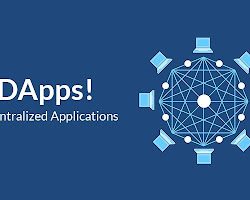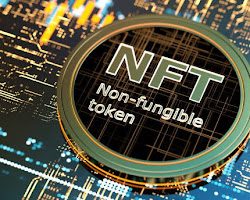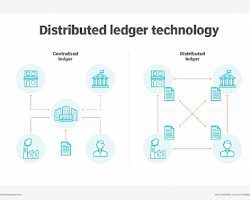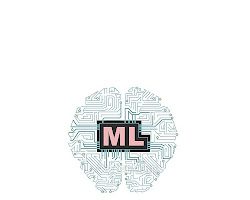Top 10 Web3 Technology That Are Shaping The Future Of Online Payment

Web3 technology refers to the next generation of the internet, characterized by decentralized, peer-to-peer networks and the integration of blockchain and other cryptographic technologies. It aims to redefine the way we interact with the web by prioritizing user privacy, data ownership, and peer-to-peer collaboration.
Web3 builds upon the principles and shortcomings of Web2, which is the current state of the internet dominated by centralized platforms and services. Web2 platforms often collect and control users’ personal data, resulting in privacy concerns, data breaches, and the concentration of power in the hands of a few tech giants. Web3 seeks to address these issues by decentralizing control, enabling direct interactions between users, and providing individuals with greater control over their digital identities and assets.
At the core of Web3 is the concept of a decentralized network. Instead of relying on centralized servers, Web3 applications (dApps) operate on decentralized networks powered by blockchain technology. Blockchain is a distributed ledger that records transactions and data across multiple computers, ensuring transparency, security, and immutability. This allows for trustless interactions without the need for intermediaries, making it harder for malicious actors to manipulate or control the system.
One of the key features of Web3 is the use of smart contracts. Smart contracts are self-executing contracts with the terms of the agreement directly written into the code. They automatically execute when predefined conditions are met, eliminating the need for intermediaries and providing secure and verifiable transactions. Smart contracts are typically built on blockchain platforms like Ethereum, which provides a programmable infrastructure for dApps.
Web3 also emphasizes the concept of digital identity and ownership. Users have control over their digital identities and can authenticate themselves across different platforms without relying on centralized authorities. Additionally, Web3 enables users to own and manage their digital assets, such as cryptocurrencies, digital collectibles (NFTs), and other forms of digital property. This ownership is made possible through the use of cryptographic keys and decentralized storage systems.
Another significant aspect of Web3 is the concept of decentralized finance(DeFi). DeFi aims to transform traditional financial systems by offering open, permissionless, and transparent financial services through smart contracts and blockchain technology. DeFi applications include decentralized exchanges, lending platforms, stablecoins, and more, allowing users to access financial services without the need for intermediaries like banks.
Web3 technology is still in its early stages, and various projects and protocols are emerging to shape its development. Some notable projects include Ethereum, Polkadot, Filecoin, IPFS (InterPlanetary File System), and many others. These projects are working towards creating a more open, secure, and user-centric internet that empowers individuals and fosters innovation.
In summary, Web3 technology represents a paradigm shift from the centralized nature of Web2 to a decentralized and user-centric internet. It leverages blockchain, smart contracts, digital identity, and decentralized finance to create a more secure, private, and transparent web ecosystem. With Web3, users have greater control over their data, identities, and assets, enabling new possibilities for peer-to-peer interactions and decentralized applications.
Also read: How Will Web3 Change The Way Of Digital Banking
Use Cases of Web3 Technology
Web3 technology has a wide range of use cases across various industries, leveraging its decentralized, transparent, and secure nature. Here are some prominent use cases of Web3:
1. Decentralized Finance (DeFi): DeFi is one of the most popular and promising applications of Web3. It aims to transform traditional financial systems by providing open, permissionless, and transparent financial services. DeFi applications include decentralized exchanges (DEXs), lending and borrowing platforms, yield farming, stablecoins, and more. DeFi allows users to access financial services without relying on intermediaries like banks, enabling greater financial inclusion, lower costs, and increased transparency.
2. Digital Identity and Self-Sovereign Identity (SSI): Web3 enables the concept of digital identity and self-sovereign identity, where individuals have control over their personal data and digital identities. SSI allows users to manage and authenticate their identities across different platforms without relying on centralized authorities. It enhances privacy, security, and reduces the risk of identity theft and data breaches.
3. Supply Chain Management: Web3 technology can revolutionize supply chain management by providing transparency, traceability, and accountability. Using blockchain, each step of the supply chain can be recorded and verified, ensuring the integrity and authenticity of products. It allows stakeholders to track and verify the origin, manufacturing processes, and movement of goods, reducing fraud, counterfeit products, and ensuring fair trade practices.
4. Gaming and Non-Fungible Tokens (NFTs): Web3 has gained significant traction in the gaming industry, particularly with the rise of non-fungible tokens (NFTs). NFTs are unique digital assets that can represent ownership of in-game items, collectibles, artwork, virtual real estate, and more. Web3 allows gamers to truly own and trade these assets, providing new monetization opportunities, player-driven economies, and provable scarcity.
5. Content Creation and Distribution: Web3 offers new possibilities for content creators by providing more direct and transparent interactions with their audiences. Blockchain-based platforms enable creators to monetize their content through micropayments, subscriptions, or crowdfunding, bypassing traditional intermediaries. Additionally, Web3 allows for more transparent and fair distribution of content, ensuring that creators receive proper attribution and compensation for their work.
6. Governance and Voting Systems: Web3 technology can enhance governance systems by enabling secure and transparent voting processes. Blockchain-based voting systems can ensure the integrity and immutability of votes, preventing fraud and manipulation. It allows for decentralized decision-making and community governance, enabling stakeholders to actively participate in the decision-making processes of organizations and protocols.
7. Decentralized Storage and File Sharing: Web3 introduces decentralized storage systems, such as IPFS (InterPlanetary File System), that provide secure, distributed storage for files and data. Decentralized storage eliminates reliance on central servers, making it more resistant to censorship and single points of failure. It also enables peer-to-peer file sharing and collaboration without intermediaries, ensuring data privacy and control.
8. Energy and Resource Management: Web3 technology can facilitate the development of decentralized energy grids and resource management systems. By leveraging blockchain and smart contracts, energy producers and consumers can directly interact and trade energy, enabling peer-to-peer energy transactions and optimizing resource allocation. Web3-based solutions can enhance energy efficiency, reduce costs, and promote renewable energy adoption.
These are just a few examples of the diverse applications of Web3 technology. As the ecosystem continues to evolve, we can expect new innovative use cases to emerge, leveraging the decentralized and trustless nature of Web3 to create more secure, efficient, and user-centric solutions across various industries.
Top 10 Web3 Technologies Shaping the Future of online payment
Web3 is the next generation of the internet, built on decentralized technologies like blockchain. This has the potential to revolutionize the way we make payments online, making them more secure, transparent, and efficient.
Here are 10 Web3 technologies that are shaping the future of online payment:
Blockchain: Blockchain is a distributed ledger technology that records transactions in a secure and tamper-proof way. This makes it ideal for storing financial data, such as payment information.

Smart contracts: Smart contracts are self-executing contracts that are stored on the blockchain. They can be used to automate payments, making them more efficient and secure.

Decentralized applications (dApps): dApps are applications that run on the blockchain and are not controlled by any central authority. This makes them more censorship-resistant and secure than traditional applications. 
Cryptocurrencies: Cryptocurrencies are digital currencies that are secured by cryptography. They can be used to make payments online without the need for a third party, such as a bank.

Non-fungible tokens (NFTs): NFTs are unique digital tokens that can represent ownership of anything, from art to music to in-game items. They can be used to make payments for digital goods and services. 
Zero-knowledge proofs: Zero-knowledge proofs are a cryptographic technique that allows two parties to verify information without revealing the underlying data. This can be used to protect the privacy of payment information.
Distributed ledger technology (DLT): DLT is a general term for technologies that record transactions in a distributed way. This includes blockchain, but also other technologies such as hashgraph and directed acyclic graphs (DAGs). 
Artificial intelligence (AI): AI is being used to develop new payment solutions, such as fraud detection and risk assessment.

Machine learning (ML): ML is being used to improve the accuracy of payment processing and to personalize payment experiences. 
The metaverse: The metaverse is a virtual world that is being built on Web3 technologies. This could provide new opportunities for online payments, such as the ability to buy and sell virtual goods and services.

These are just a few of the Web3 technologies that are shaping the future of online payment. As these technologies continue to develop, we can expect to see even more innovation in the way we make payments online.
Also read: Top 10 Metaverse Trends That Pave The Future For Web3
We collaborated with @Film3Squad to host the MetaCannes Film3 festival, a first in Web3. Utilizing our industry leading studio-level DRM technology, we are building the future of media and entertainment! Check out our new case study here. pic.twitter.com/3ag42YsWCg
— Theta Network (@Theta_Network) August 2, 2023
Benefits of Web3 Technologies
Web3 technologies offer a range of benefits that have the potential to revolutionize the internet and various industries. Here are some key benefits of Web3:
1. Decentralization: Web3 is built on decentralized networks, such as blockchain, which eliminates the need for intermediaries and central authorities. This decentralization fosters trustless interactions, reduces the risk of single points of failure, and increases system resilience. It also enables peer-to-peer transactions and collaboration, empowering individuals and communities.
2. Enhanced Privacy and Security: Web3 technologies prioritize user privacy and data security. With decentralized networks, users have greater control over their personal data, as it is not stored on centralized servers vulnerable to hacking or data breaches. Encryption and cryptographic techniques used in Web3 ensure the privacy and integrity of transactions and communications. Users can also authenticate themselves across platforms without relying on centralized authorities, reducing the risk of identity theft.
3. User Ownership and Control: Web3 empowers users to have ownership and control over their digital assets, identities, and data. Blockchain-based systems allow users to truly own and transfer digital assets, such as cryptocurrencies and NFTs, without relying on intermediaries. Users can control access to their data and choose which applications and platforms can access their information. This shift towards user-centric control reduces dependency on centralized platforms and gives individuals more autonomy over their online presence.
4. Transparency and Trust: Web3 leverages blockchain technology, which provides transparency and immutability of data. Transactions recorded on the blockchain are transparent and can be audited by anyone, ensuring accountability and reducing the potential for fraud. Smart contracts, a key feature of Web3, automate and enforce agreements, eliminating the need for intermediaries and increasing trust in business transactions.
5. Financial Inclusion and Access: Web3, particularly decentralized finance (DeFi), has the potential to increase financial inclusion by providing open and permissionless financial services to individuals who lack access to traditional banking systems. With Web3, anyone with an internet connection can participate in DeFi applications, access loans, trade assets, and earn interest without relying on traditional intermediaries. This can empower underserved populations and reduce financial barriers.
6. Innovation and Interoperability: Web3 fosters innovation by providing a programmable and open infrastructure. Developers can build decentralized applications (dApps) on existing blockchain platforms or create their own protocols, leveraging the power of smart contracts. Web3 protocols often strive for interoperability, enabling different dApps and platforms to interact seamlessly, facilitating the exchange of assets, data, and services.
7. Community Governance: Web3 enables decentralized governance, allowing stakeholders to participate in decision-making processes. Blockchain-based systems often include mechanisms for voting and consensus-building, enabling community-driven governance models. This fosters transparency, inclusivity, and collective decision-making, reducing the concentration of power in centralized entities.
8. Resilience and Anti-Censorship: Web3’s decentralized nature makes it more resistant to censorship and control by central authorities. Since data is distributed across multiple nodes in a decentralized network, it becomes harder for any single entity to manipulate or censor information. This can empower individuals in regions with restricted internet access or oppressive regimes to access and share information freely.
9. Micropayments and New Revenue Models: Web3 enables micropayments and new revenue models for content creators, artists, and developers. Blockchain-based systems allow for frictionless and cost-effective micropayments, enabling users to pay small amounts for digital content or services. This opens up new monetization opportunities and creates direct financial relationships between creators and consumers.
10. Intermediary Disintermediation: Web3 reduces the need for intermediaries across various industries. By facilitating peer-to-peer transactions, eliminating middlemen, and automating processes through smart contracts, Web3 can lower costs, increase efficiency, and streamline business operations. This disintermediation can disrupt traditional industries and create new opportunities for collaboration and value exchange.
These benefits of Web3 technology highlight its potential to reshape the internet, promote user empowerment, and foster a more inclusive and secure digital ecosystem. As Web3 continues to evolve, it has the capacity to drive innovation, transform industries, and redefine how we interact with the digital world.
Also read: Top 10 Web3 Trends That Pave The Future For AI
Future of Web3 Technology
The future of Web3 technology holds tremendous potential for transforming the internet and various industries. Here are some key aspects that shape the future of Web3:
1. Continued Development and Adoption: Web3 technologies are still in their early stages of development. As developers and innovators continue to refine and enhance the capabilities of decentralized networks, blockchain protocols, and decentralized applications (dApps), we can expect to see significant advancements and improvements. The adoption of Web3 technologies is also expected to grow as more individuals, businesses, and organizations recognize the benefits of decentralization, privacy, and user ownership.
2. Mainstream Integration: Web3 technologies have the potential to go mainstream, with wider adoption and integration into everyday applications and services. As user-friendly interfaces and infrastructure improve, the barriers to entry for non-technical users will be reduced. This will lead to increased adoption of decentralized applications, decentralized finance (DeFi), and other Web3 solutions across different industries, including finance, gaming, supply chain, healthcare, and more.
3. Scalability Solutions: One of the critical challenges faced by current blockchain networks, such as Ethereum, is scalability. The future of Web3 will likely witness the development and implementation of various scalability solutions to address the limitations of current blockchain architectures. Solutions like sharding, layer-2 protocols (e.g., Plasma, Optimistic Rollups), and alternative consensus algorithms (e.g., Proof of Stake) aim to improve transaction throughput, reduce fees, and enhance the overall scalability of decentralized networks.
4. Interoperability and Cross-Chain Communication: Interoperability will play a vital role in the future of Web3. As different blockchain platforms and protocols emerge, there will be a need for seamless communication and interoperability between them. Cross-chain solutions and interoperability protocols, like Polkadot, Cosmos, and others, aim to facilitate the exchange of assets, data, and services across different blockchain networks, promoting collaboration and the creation of a unified Web3 ecosystem.
5. Improved User Experience: User experience (UX) plays a crucial role in the adoption and success of Web3 technologies. As the field progresses, there will be a focus on improving the user interfaces (UI) and overall user experience of decentralized applications. Efforts will be made to make Web3 applications more intuitive, user-friendly, and accessible, reducing the technical complexity and barriers for mainstream adoption.
6. Privacy and Security Enhancements: With growing concerns about data privacy and security, Web3 technologies will continue to emphasize privacy-enhancing features. Advanced cryptographic techniques, zero-knowledge proofs, secure multi-party computation, and privacy-focused protocols will be further developed and integrated to protect user data and transactions while ensuring transparency and auditability.
7. Web3 and Internet of Things (IoT) Integration: Web3 technologies have the potential to intersect with the Internet of Things (IoT), enabling secure and decentralized communication, data sharing, and automated transactions between IoT devices. This integration can enhance the efficiency, security, and privacy of IoT networks and enable new business models and use cases, such as autonomous machine-to-machine transactions, supply chain management, and energy optimization.
8. Regulatory and Legal Frameworks: As Web3 technologies continue to evolve and gain widespread adoption, there will be a need for clear regulatory frameworks to address legal and compliance considerations. Governments and regulatory bodies are likely to develop regulations that balance the benefits of Web3 with the need to address potential risks, such as anti-money laundering, consumer protection, and data privacy. These regulatory frameworks will play a crucial role in shaping the future of Web3 and its integration into existing legal and financial systems.
9. Impact on Traditional Business Models: Web3 technologies have the potential to disrupt traditional business models across various industries. Decentralized finance, decentralized marketplaces, peer-to-peer services, and self-sovereign identity solutions can challenge centralized intermediaries and create new opportunities for value creation and collaboration. Existing businesses will need to adapt and explore new ways to leverage the benefits of Web3 or face the risk of becoming obsolete.
10. Social Impact and Empowerment: Web3 technologies have the potential to empower individuals and communities by giving them greater control over their data, digital identities, and financial assets. This can lead to increased financial inclusion, reduced inequalities, and enhanced opportunities for individuals in underserved regions. Web3 can also foster greater transparency, accountability, and participation in governance systems, enabling more democratic decision-making processes.
The future of Web3 technologies is filled with possibilities. As the field continues to evolve, we can expect advancements in scalability, interoperability, privacy, and user experience. The integration of Web3 with other emerging technologies like IoT and the development of regulatory frameworks will shape its impact on industries and society as a whole. Ultimately, Web3 holds the promise of a more decentralized, transparent, and user-centric internet that empowers individuals, fosters innovation, and unlocks new economic and social opportunities.




























































